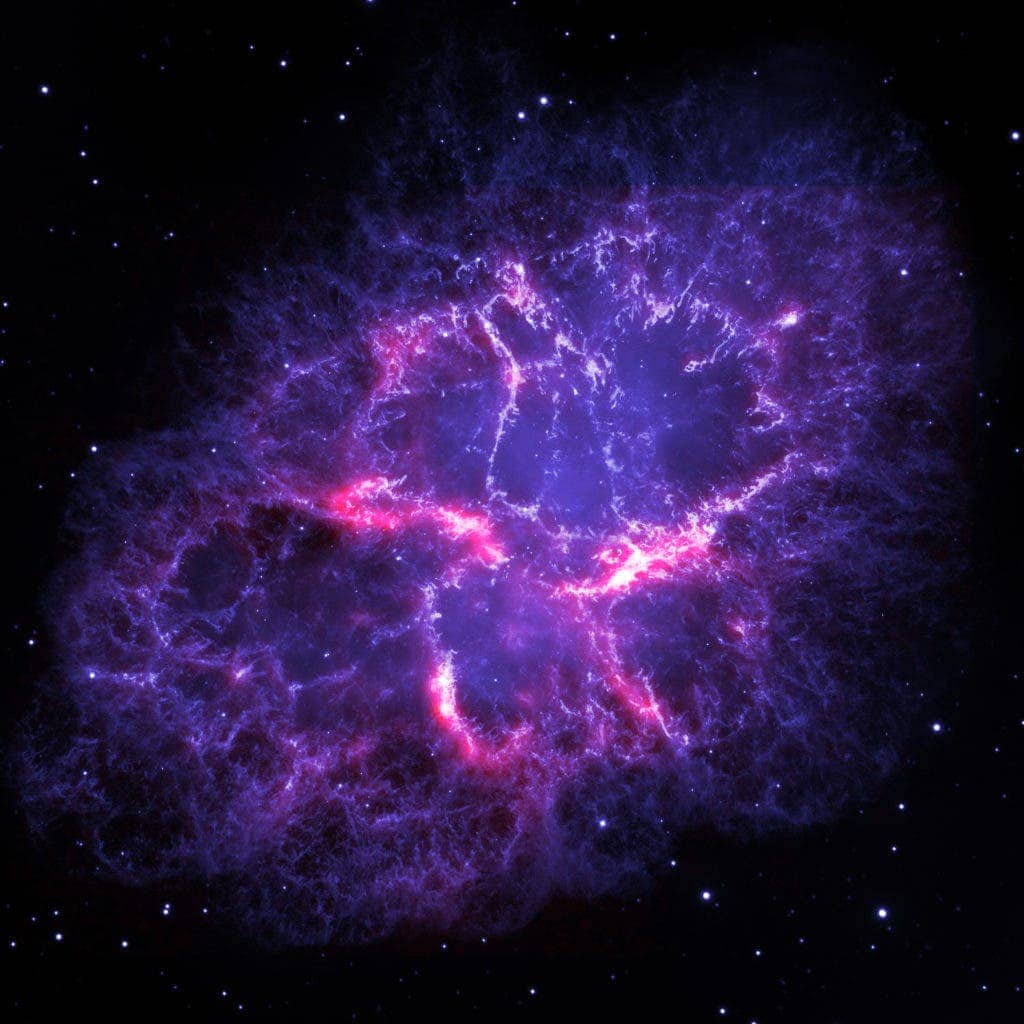
An experiment involving over 600 particle detectors stretched over 36,900 square meters has measured the most energetic light ever witnessed on this planet. The photons were part of gamma rays emanating from the famous Crab Nebula, the remains of a supernova that was first observed in 1054 AD, which is located approximately 6,500 light years away. These photons measured tremendously high values exceeding 100 trillion electron volts (TeV), with one measurement clocking in 450TeV — the highest ever recorded. Previously, photons measuring no more than tens of trillions of electronvolts had been recorded.
Physicists started the Tibet Air Shower Gamma Collaboration, an observatory in the Tibetan Plateau some 4,300 meters above sea level because rarified air at this altitude allows more secondary particles to reach detectors. Secondary subatomic particles are created when cosmic rays and gamma rays interact with particles in the upper atmosphere.
By measuring and excluding muon particles — an elementary subatomic particle similar to the electron but 207 times heavier — physicists were able to backtrack the energy and origin of the incoming gamma rays that caused the showers. A total of 24 events caused by intense photons with energies higher than 100 trillion electronvolts were reported. To get a sense of the scale involved, regular photons that emanate from the sun — particles of visible light — have an energy of only a few electronvolts.
Now that scientists have experimental confirmation that high-energy photons reach Earth, they can elaborate a more precise model for how such particles are created and whether or not there’s a limit to how much energy they can carry.
In this particular case, researchers think that the gamma rays were accelerated by a process known as Inverse Compton scattering — a process during which super high-energy electrons bounce off lower energy photons. Inside the Crab Nebula, electrons may have scattered off low-energy photons from the cosmic microwave radiation (photons created soon after the Big Bang).
The findings appeared in the journal Physical Review Letters.






